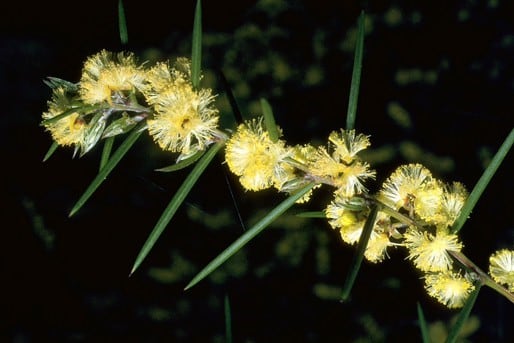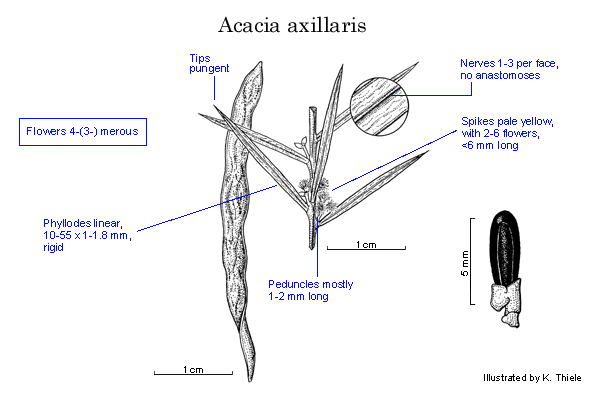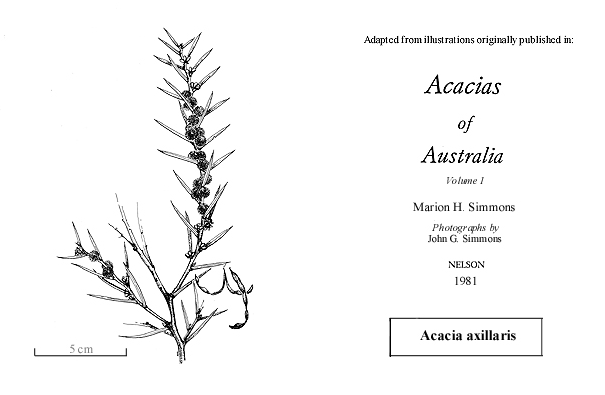Acacia axillaris Benth.
WATTLE
Acacias of Australia
Family
Fabaceae
Distribution
Confined to Tas. and known only from a few restricted localities in open forests and woodlands between Campbell Town, Avoca and Lake Leake particularly near the Elizabeth R.
Description
Shrub 2–4 m high, erect or spreading, much-branched. Stipules persistent, small, less than 1.2 mm long. Phyllodes linear, flat, 1–5.5 (–7) cm long, 1–1.8 mm wide, with pungent-pointed apex, often thick, rigid; nerves commonly 3 to each face, with one prominent or, if phyllodes acicular or angular, then with 4 prominent nerves and sometimes faint nerves between them; gland obscure or absent; pulvinus absent or very short. Inflorescences with peduncles 1.5–2 (–4) mm long; spikes reduced to solitary or rarely paired clusters of 2–6 flowers less than 6 mm long; bracteoles navicular, c. 1 mm long, 0.6 mm wide. Flowers 4-merous or rarely 3‑merous; sepals united. Pods subcylindrical, slightly moniliform, 2–8 cm long, 2–3.5 mm wide. Seeds elliptic or cylindrical, 4–4.5 mm long; funicle folded once or twice; aril prominent.
Phenology
Flowers Sept.–Oct. and fruits Feb.
Specimens
Tas.: Royal Gorge, banks of St Pauls R., date and coll. unknown (HO); St Pauls R., near China Cup Hill, A.Moscal 811 (MEL); 10.9 km E of Campbell Town along Lake Leake Hwy to Swansea, F.E.Davies 902A & P.Ollerenshaw (MEL).
Notes
Distinguished from A. verticillata by its often longer phyllodes which are never whorled and its flowers in shortly pedunculate clusters, and from A. riceana, its closest relative, by its shorter spikes (which appear as globular heads) on shorter peduncles.
FOA Reference
Data derived from Flora of Australia Volumes 11A (2001), 11B (2001) and 12 (1998), products of ABRS, ©Commonwealth of Australia
Author
A.B.Court
Minor edits by B.R.Maslin & J.Reid
This identification key and fact sheets are available as a mobile application:
URL: https://apps.lucidcentral.org/wattle/
© Copyright 2018. All rights reserved.









